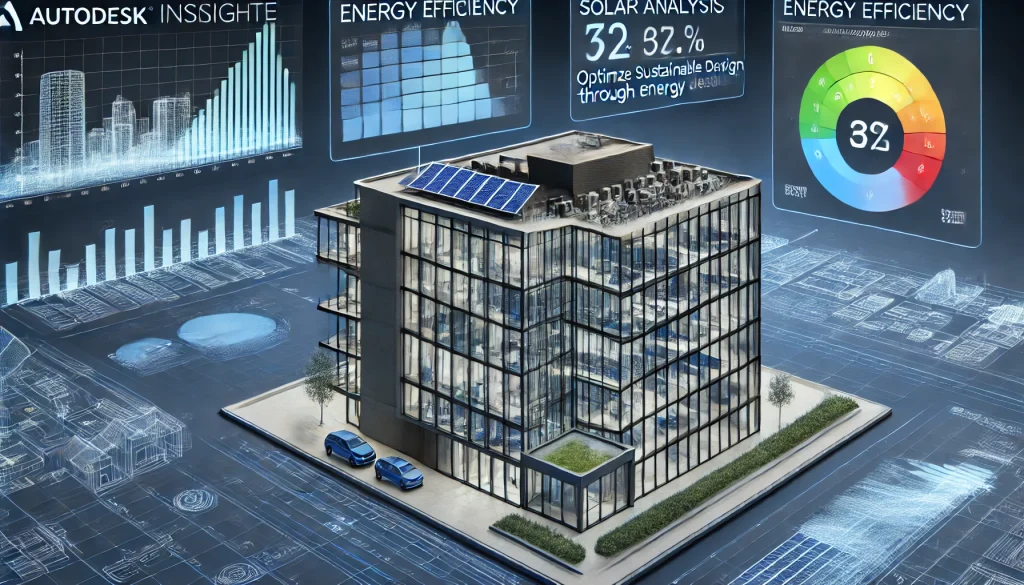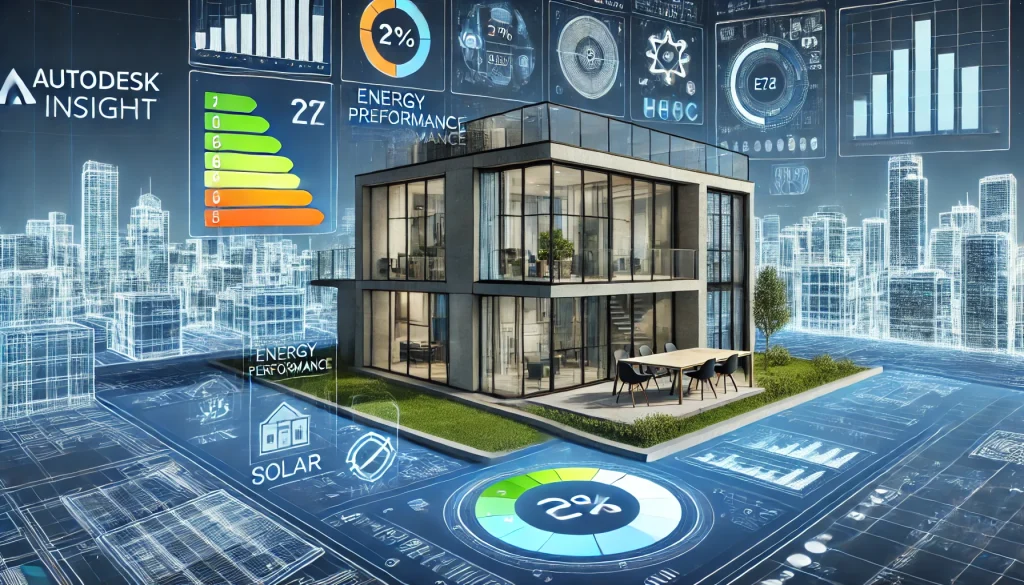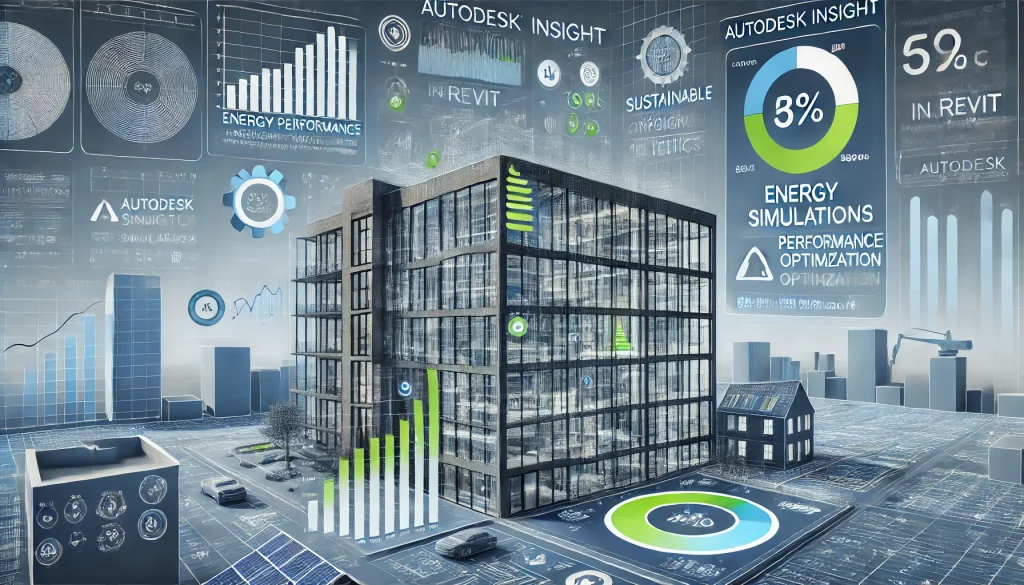
Energy efficiency and sustainable design are increasingly essential in modern architecture. Tools like Autodesk Revit and Insight empower professionals to evaluate building performance, providing key insights into energy usage and environmental impacts. Energy analysis using these tools is vital for optimizing building performance, lowering operational costs, and ensuring long-term sustainability.
In this guide, we will explore the process of conducting energy analysis in Revit using Autodesk Insight. Whether you’re an industry professional or a design enthusiast, this step-by-step tutorial will help you integrate sustainable design principles into your projects, creating energy-efficient structures that align with modern green building standards.
Materials or Tools Needed
Before diving into energy analysis and sustainable design using Autodesk Insight, ensure you have the following prerequisites:
- Autodesk Revit (latest version recommended)
- Autodesk Insight 360 plug-in installed in Revit
- A project model within Revit for analysis
- A basic understanding of building elements and construction assemblies
With these tools at hand, you’re ready to explore how energy analysis can guide you toward more sustainable design choices.
Step-by-Step Instructions

Step 1: Set Up Your Revit Model for Energy Analysis
The first step in energy analysis is to ensure that your Revit model is set up correctly. Transition into the energy modeling workflow by making sure all building elements (such as walls, roofs, and floors) are appropriately defined. Check that the project location, weather settings, and orientation are accurate, as these will affect the analysis results. This setup ensures that Autodesk Insight can provide the most realistic energy consumption projections.
Step 2: Launch Autodesk Insight from Revit
Once your model is ready, launch Autodesk Insight from within Revit. Go to the “Analyze” tab and select “Insight.” Insight will create an energy model based on the elements you’ve defined in Revit. Be sure to review the model’s properties to confirm that all key variables, such as glazing types, insulation, and HVAC systems, are correctly specified. This energy model will form the basis for further simulation and analysis.
Step 3: Run Energy Simulations and Analyze Results
After setting up Insight, run energy simulations by selecting the energy analysis tool. Insight will simulate different environmental conditions, operational schedules, and design alternatives to give you a range of performance metrics. Review results such as Energy Use Intensity (EUI), operational cost, and greenhouse gas emissions. These insights will help you compare design options, identify inefficiencies, and improve the sustainability of your building design.
Step 4: Compare Design Alternatives for Sustainable Solutions
With your energy simulation results in hand, use Insight to compare design alternatives. Insight allows you to evaluate how changes in materials, shading devices, or building orientation can improve energy efficiency. You can experiment with various parameters and immediately see how these changes impact energy consumption and environmental impact. This iterative process ensures you can refine your design to align with sustainable building goals.
Step 5: Optimize the Model for LEED and Green Building Standards
To further enhance the sustainability of your design, Autodesk Insight integrates with LEED and other green building certification standards. After analyzing energy use, apply these insights to adjust your Revit model to meet specific criteria for energy efficiency and environmental performance. This could include improving daylighting strategies, enhancing natural ventilation, or optimizing mechanical systems for lower energy consumption.
Do’s and Don’ts

Do’s:
- Do ensure that all building elements in Revit are properly defined before launching Insight. This will lead to more accurate simulation results.
- Do use Insight’s “range” analysis to compare different design scenarios. The ability to visualize the impact of design changes is key to achieving sustainable solutions.
- Do run multiple simulations at different stages of the design process. Early-stage analysis allows for better integration of energy-efficient strategies, while late-stage analysis helps refine and optimize design choices.
Don’ts:
- Don’t rely solely on the default settings in Revit or Insight for accurate energy analysis. Customize the settings to reflect the specific needs of your project, including local weather patterns and operational schedules.
- Don’t overlook the importance of insulation and thermal properties in your model. Misrepresenting these values can lead to inaccurate energy consumption predictions.
- Don’t forget to check for updates or new features in Autodesk Insight that could enhance the accuracy of your energy simulations. Autodesk frequently adds tools that can streamline sustainable design processes.
Conclusion
Incorporating energy analysis into your design workflow using Autodesk Revit and Insight is a crucial step toward creating more sustainable buildings. With tools that allow for detailed simulations and comparisons, you can make informed decisions that enhance energy efficiency and minimize environmental impact. Following the steps outlined in this guide ensures a systematic approach to achieving sustainable design goals. Now, it’s time to implement these techniques and lead your projects into a more energy-efficient future.
FAQ
How can I ensure accurate energy analysis results in Revit?
Make sure all building elements are defined, and the model includes accurate details such as material properties, orientation, and weather settings. These factors heavily influence the accuracy of the analysis.
What is Energy Use Intensity (EUI), and why is it important?
EUI measures the energy consumption of a building per square foot. It’s a critical metric in energy analysis as it helps you evaluate the efficiency of your design relative to similar structures.
Can I integrate Autodesk Insight with green building certification programs?
Yes, Insight is designed to support green building standards like LEED by helping you analyze and optimize your design for energy efficiency and environmental performance.
